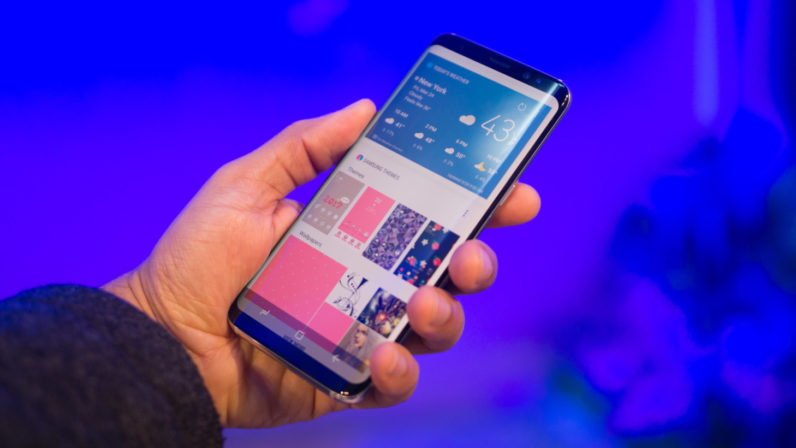If you were impressed by what you’ve heard about the Galaxy S8 already, then wait and see what happens in the next few months.
The major change in the flagship phone for Samsung was the massive display the device comes with, which was thanks to space opened up by removing the home button and the edges of the phone.
There’s a great feature hidden behind that massive screen; a feature that could take a few months to really shine through. The Samsung Galaxy 8 is the first phone equipped with the Snapdragon 835, the latest and greatest processor from Qualcomm. What makes the Snapdragon 835 so impressive is that it can connect to Gigabit LTE-class speeds; the latest benchmark that every US carrier will be heading towards.

What Is Gigabit LTE?
To put Gigabit LTE into simple terms, it’s a 4G LTE connection turned up to 11. The Galaxy S8 is going to be the first smartphone to connect with networks speeds of up to 300mb/s, which is around 18 times faster than the average connection speeds T-Mobile and Verizon achieved in the latest OpenSignal performance test. To put it even simpler; Gigabit LTE would take just 15 seconds to download a 2-hour movie.
Yeah, that’s pretty fast!
Gigabit LTE is more than just faster browsing. It also opens up the door for live 360-degree video streaming virtual reality. It also powers Google’s vision of “instant apps”. These are programs that can load as quickly as a website.
It also allows you to grab photos and videos from the cloud and have them load instantly like they were always on your phone. It actually has a connection speed so fast it connects to the Internet faster than your phone can connect to a flash memory card!
The name for Gigabit LTE comes from the fact that you can supposedly reach speeds of up to 1 gigabit a second. This is a little confusing as this is the hypothetical peak speed, and is not an actually achievable feat.
You shouldn’t expect such intense speeds immediately. It will take a few technical tweaks before carriers can reach these high speeds. This involves complicated terms such as 4×4 MIMO and carrier aggregation. No need to worry, though – just wait for it to pass. The upgrades are still being worked on, meaning that speeds are likely to keep increasing as the years passes.
It looks like T-Mobile could be the closest to these speeds. They boasted that the Samsung Galaxy S8 would be able to reach double the normal T-Mobile speeds in around 300 cities.
CEO of T-Mobile John Legere released a statement saying that – when you combine the most powerful Samsung phone with the most advanced LTE network – you are left with an industry that needs to redefine what “fast” really means.
It was during a press conference at CS 2017 in January where Legeere promised T-Mobile would be the first company to officially move to Gigabit LTE.
Sprint is also working on getting Gigabit LTE to several major markets, starting with New Orleans. The Galaxy S8 will support not just Gigabit LTE, but also High-Performance User Equipment. This new technology should provide another speed boost to the phone.
AT&T said that they plan to deploy SG Evolution – their term for Gigabit LTE – in Austin and Indianapolis in the next few months.
Verizon also confirmed they would offer Gigabit LTE, but declined to add specific details.
Just the Start
The Galaxy S8 might be the first phone to implement this brand new technology, but it won’t be the last. It’s expected that as many as ten different devices could embrace Gigabit LTE capabilities will be released by the end of the year. These phones will all have a Snapdragon 835 processor.
Even so, the chip isn’t a requirement necessary to access Gigabit LT. Qualcomm also offers a standalone X18 modem that can also reach Gigabit LTE speeds. These modems are designed for companies with different processors, such as Apple. Apple uses their own proprietary A10 chips in their iPhone 7 and iPhone 7 Plus.
In Australia, Telstra is a local carrier that already has their own Gigabit LTE network running. Users can access it with a mobile hotspot with an X16 modem.
It’s expected that, as well as offering higher speeds, having everyone connected to the Gigabit LTE network means the network capacity is freed up and everyone gets even higher speeds.
It’s certainly not a coincidence that US carriers are bringing back unlimited data plans again. If you’re snapping one up for yourself, then you have Gigabit LTE to thank.